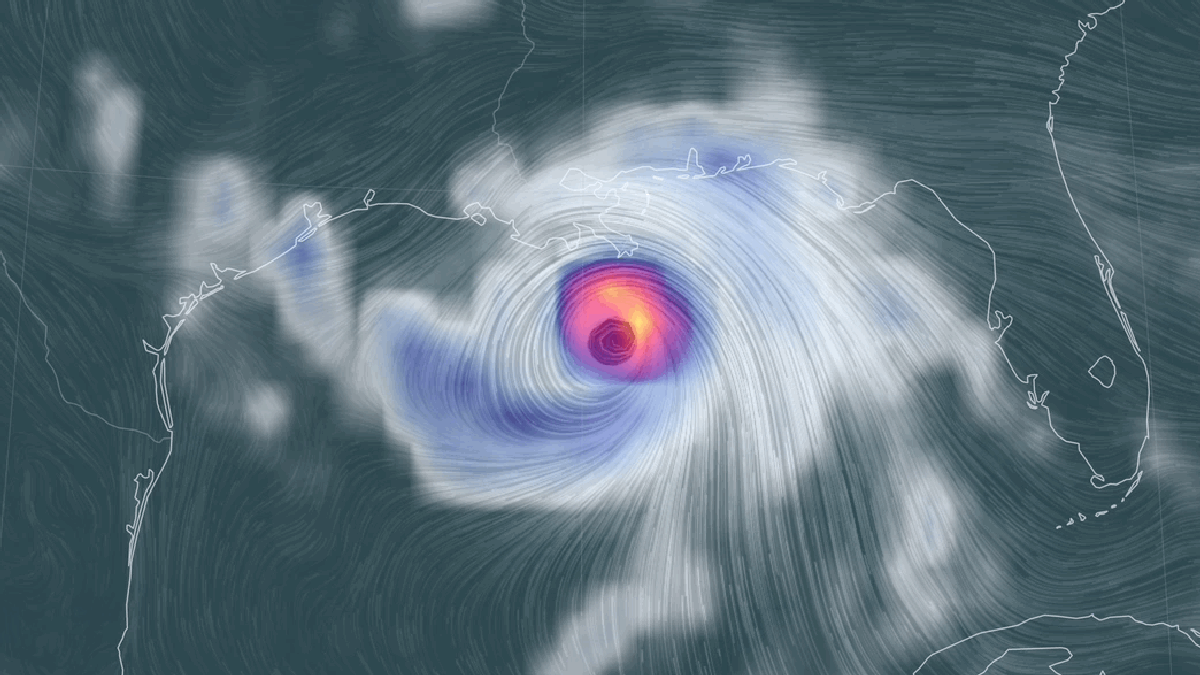
With a storm looming, we are heading into Atlantic hurricane season's peak. It could prove to be very dangerous.
Advertisement
Although Tropical Storm Henri brought rain to the Northeast, and parts of the Caribbean last weekend, what could become Hurricane Ida could bring more. Tropical Storm Ida is currently located in the Caribbean. It will pass through Cuba and the Cayman islands in the next 24hrs before reaching the warm waters of Gulf of Mexico. Everything is set up for Ida to turn into a powerful hurricane as it moves northward. Ida will make a mess somewhere along the Gulf Coast Monday. This is almost a year after Hurricane Laura struck western Louisiana, and 16 years after Katrina devastated New Orleans.
The forecast is something you should be paying attention to if you are a resident of the area. As soon as Ida gets closer, the track will change. However, the danger of a severe storm is real.
What's the Situation Now?
Ida was a Tropical Depression for most of Thursday, before it was upgraded to a Tropical Storm after Hurricane Hunter aircraft measured wind speeds of 40 mph (66.4 kph). This was not surprising, as the National Hurricane Center had already issued Tropical Storm Warnings for Cuba and Caymans in anticipation of Tropical Storm Ida hitting those countries within the next 36 hours. Tropical-storm-force winds will be felt by the Caymans tonight.
This system is already quite large. Although Jamaica is not expected to be directly hit by the storm, Ida is forecast to drench the country as rain bands wrap around the strengthening system. The NHC has called for 15 inches (38 cm) of rain to befall the island, which is located 230 miles (390 km) east of Caymans. The Cayman Islands and Cuba will receive widespread rainfall of 6-10 inches (15-25 centimeters), with some areas receiving 20 inches (50 cm) of rain. This could lead to flooding and landslides in each of these countries.
Advertisement
NHC warned of up to 4ft (1.2m) storm surge, which would be accompanied with large destructive waves.
What happens when Ida reaches the Gulf of Mexico?
Ah, the million-dollar question. The storm will move to the Gulf of Mexico once Ida has cleared Cuba's western tip. There are warm waters that can help Ida become hurricane-force.
Advertisement
The Gulf is unusually warm, except for an area that was whipped up by Hurricane Grace off of the Yucatn Peninsula last Wednesday. The waters around Ida are expected to reach temperatures of 3.6 degrees Fahrenheit (2° Celsius), which is above the normal for this time year. Importantly, the waters are at least 86 degrees Fahrenheit (30° Celsius), which is a temperature that can help storms intensify rapidly. Climate change is also evident in the constant reminders that water temperatures are higher than normal.
The NHC forecast indicated that Ida might be just a shade below a category 3 hurricane by Sunday morning. This is what's known as a major cane. This year, the only major hurricane to hit the basin has been Hurricane Grace. Hurricane Grace was a Category 3 hurricane and passed over the Bay of Campeche, between Mexico's Yucatn state and Veracruz. We will see how Ida develops. However, it could become this year's second major hurricane if the conditions remain favorable.
Advertisement
The forecast track currently places it somewhere between Texas and Louisiana. This is especially concerning considering the fact that the region was ravaged by Hurricanes Laura, Delta and the deep freeze this winter.
It is too early to talk about exact landfalls or impacts in the U.S. and the track will likely change. However, this storm is not one to be underestimated. Major storm surge, rain and wind are all possible. This is the "ready phase" of ready, set and go for those who live on the Gulf Coast. It is worth paying attention to the track over the next few days. As the track becomes more clear, you might consider shifting into set mode.
Advertisement
The Peak of Hurricane Season is Nearly Here
The map of the tropics looks a lot busier. The NHC is monitoring two other areas of concern in the Atlantic in addition to the hurricane in the Caribbean. The agency had been anticipating an above-average season of activity. The statistical peak is mid-September so things are moving quickly. Unfortunately.
Advertisement
After a decade of data that showed more storms in the Atlantic, the agency has raised the average season. This is due to better observations and climate change. The future is awaiting cluttered maps such as the one on the NHC site and last year's record-setting season from hell.
Update, 8/26/21 at 6:18 pm: This post has been updated to reflect the most recent forecast information, which includes data captured by Hurricane Hunters.
